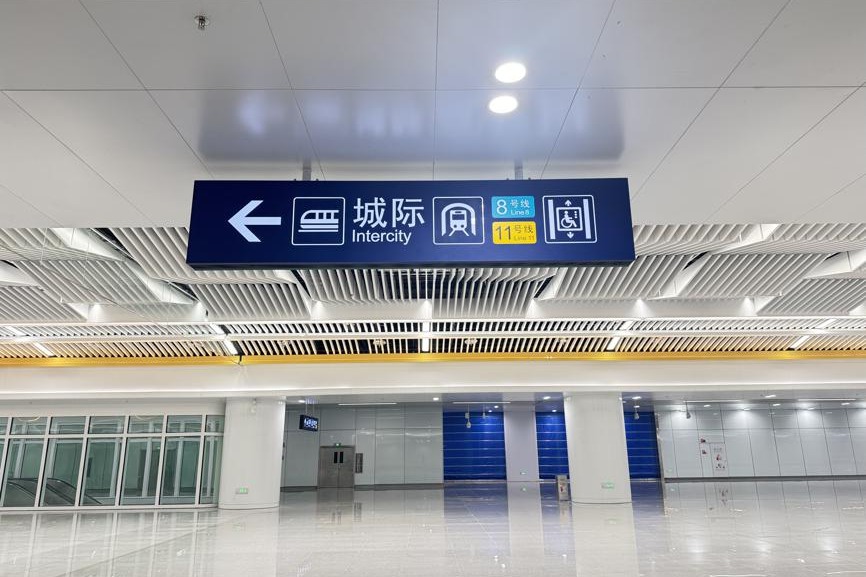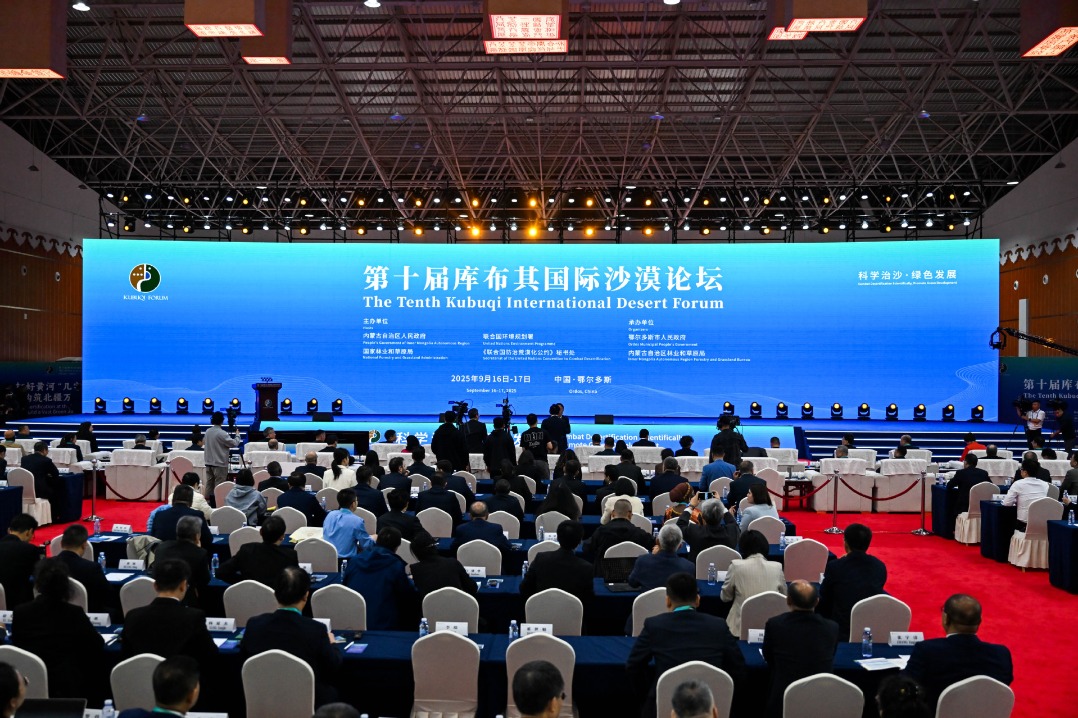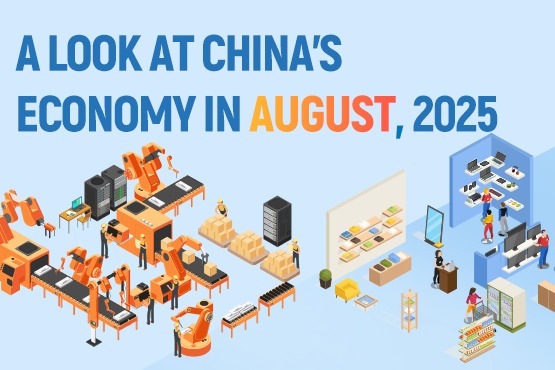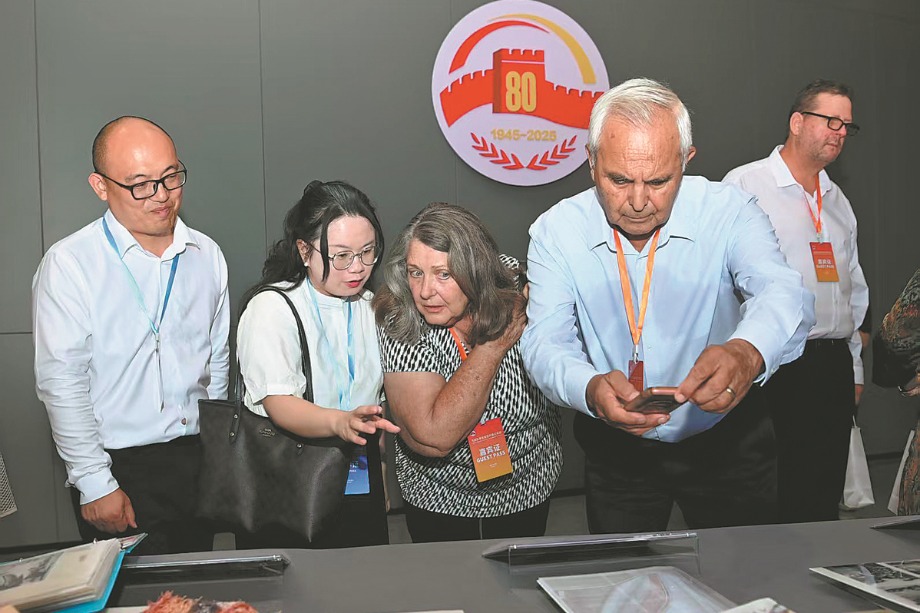Delivery platforms urged to reduce plastic pollution

The growth of takeout food deliveries provides customer convenience, but also poses an eco-threat, as Zheng Jinran reports.
On workdays, Ma Rong, a 25-year-old white-collar worker in Beijing, usually orders takeout at lunchtime, especially on hot summer days, to avoid crowded restaurants and save time.
"We don't have a canteen or time to cook when working, so we have to rely on takeout," she said.
Easy access to the internet and efficient delivery mean a growing number of people are taking advantage of takeout services. While these services bring convenience, the nonbiodegradable plastic bags and boxes used to wrap and deliver the food are damaging the environment, while mass provision of single-use wooden chopsticks is depleting natural resources.
Data released in August by the China Internet Network Information Center show that between January and July, 295 million people in China ordered takeout via the internet. In December 2015, the number was 114 million.
As a result, the takeout sector has seen explosive growth, with the number of domestic users rising by 2.6 times in just 18 months, according to the center, the national organization for online businesses.
Moreover, the surge is set to continue, according to Jiang Junxian, head of the China Cuisine Association. Speaking at the opening ceremony of the first forum on takeout services on July 1, Jiang told the audience that 345 million people are expected to order takeout in 2018.
In addition, people are also likely to place orders more frequently. According to data compiled by ele.me, a leading supplier of takeout food, 66 percent of those who used the company's services last year will place one order a week this year.
Rising public concern
However, what's good for business isn't always good for the environment, and public concern is growing.
"On average every order includes at least four plastic bags and boxes to pack the food, plus a set of disposable chopsticks, spoons and napkins," Ma said, adding that the materials inevitably end up in the trash can.
"I know that plastic contaminates the environment but there's no alternative because restaurants don't use biodegradable bags."
Models devised by the Green Volunteer League, an environmental NGO in Chongqing, present an alarming picture of consumption and pollution in the sector.
On Aug 20, the NGO wrote an open letter to major meal delivery platforms stating that its calculations show that if every takeout included 1.5 pairs of chopsticks (the average number used) and a major platform received 13 million orders in a day, more than 1.95 million pairs of chopsticks would be required to meet demand.
That scenario would see more than 6,700 trees being felled, resulting in the destruction of forest ecosystems and eco-degradation, the NGO said.
Xue Yue, an expert in plastic pollution at the China National Resources Recycling Association in Beijing, said most of the plastic packaging ends up in landfills or incinerators.
"Most of this packaging is nonbiodegradable, so it can plague the environment for decades or even hundreds of years," he said. "The low cost of nonbiodegradable plastic is the main reason it is so dominant in the market."
He added that the low recycling rate for plastic packing is exacerbating the situation.

Legal challenge
On Sept 1, No 4 Intermediate People's Court in Beijing accepted a lawsuit filed against three delivery platforms by the Green Volunteer League.
The league claims that the disposable packaging used by the platforms, including ele.me and a rival called Meituan, poses a high risk of environmental contamination and ecological damage. Moreover, it criticized platforms for not providing customers with a choice of alternative packaging materials.
Wang Mingyuan, a professor of environmental law at Tsinghua University, spoke out in favor of the lawsuit: "I think it indicates growing awareness of pollution caused by takeout food companies, and could make them amend their practices."
However, he pointed out that litigants rarely win public interest cases because the complexity of such suits means it is difficult to ascribe legal responsibility.
"It's much better to directly contact government departments, which can work with these companies to make improvements," he added.
Many delivery businesses now accept that the sector is damaging the environment, and are adopting measures to combat the problem.
On June 29, the China Environmental Protection Foundation, a green NGO, the China Cuisine Associat ion, Meituan and about 100 food producers announced the formation of an organization to promote environmentally friendly takeout services.
"Among our 10 initiatives, we are calling for widespread use of eco-friendly packaging for takeout," said Bai Xiangdong, the foundation's director of business development.
"We recognize the risk of pollution and understand that delivery platforms are responsible for controlling it. That means it is necessary for us to take measures such as setting up our organization."
On Aug 31, the day before the court accepted the lawsuit, Meituan pledged to upgrade its takeout app to provide customers with the option of ordering food in nonplastic packaging and without chopsticks, spoons or napkins.
Meanwhile, on Sept 6, ele.me published a plan to offer a similar service and promote incentives to encourage customers to embrace the change.
The company's statement said more measures will be adopted, including forming a new industry association - comprising companies, NGOs and experts - which will focus on environmental protection and call for national environmental standards on packaging in the sector.
Sorting projects
According to Bai, from the China Environmental Protection Foundation, most packaging used for takeout food is dumped in trash cans, which means it is processed with other household garbage. He urged greater sorting of waste materials as an environmental protection measure which could reduce the volume of packaging, chopsticks and napkins in landfills, and also reduce emissions of pollutants from incinerators.
| A model made mainly from delivery waste by students of a middle school in Hebei province.Zhao Chenguang / For China Daily |
"It would reduce takeout pollution, but the work would have to be done by local governments to ensure it is done properly," he said.
In March, Renmin University of China published a report on a garbage-sorting project in Beijing whose use indicated improved energy conservation and lower economic costs.
Song Guojun, a professor of environmental studies at Renmin who led the survey group, calculated that if the project had been in use in 2015 the cost of incineration services in the capital would have fallen by 64 percent, from 4.22 billion yuan ($638 million) to 1.53 billion.
Along with NGOs and large companies, a growing number of individuals are working to raise awareness of environmental protection.
Since 2011, Guo Liang, a physics teacher at a middle high school in Feixiang county, Hebei province, has guided a group of students who make models from waste packaging.
The students found the raw materials in the street, which raised their awareness of pollution and made them think twice about using disposable chopsticks, according to Guo.
He quoted the students' summary of the project: "As individuals, we cannot really make a huge difference in the consumption of plastic, but we should always strive to make changes, no matter how trivial."
Jiang Chenglong contributed to this story.
Contact the writer at zhengjinran@chinadaily.com.cn


(China Daily 09/28/2017 page6)
- HKSAR chief executive delivers 2025 Policy Address
- 70 years of progress: Yumin county enters a brand-new chapter
- Speakers at think tank event?stress global cooperation
- Second Sino-LAC Sinology Season kicks off in Qingdao
- Preview of 2025 aviation open-day activities of PLA Air Force and Changchun Air Show
- Reba Dance added to regular curriculum in Lhasa, China's Xizang






































